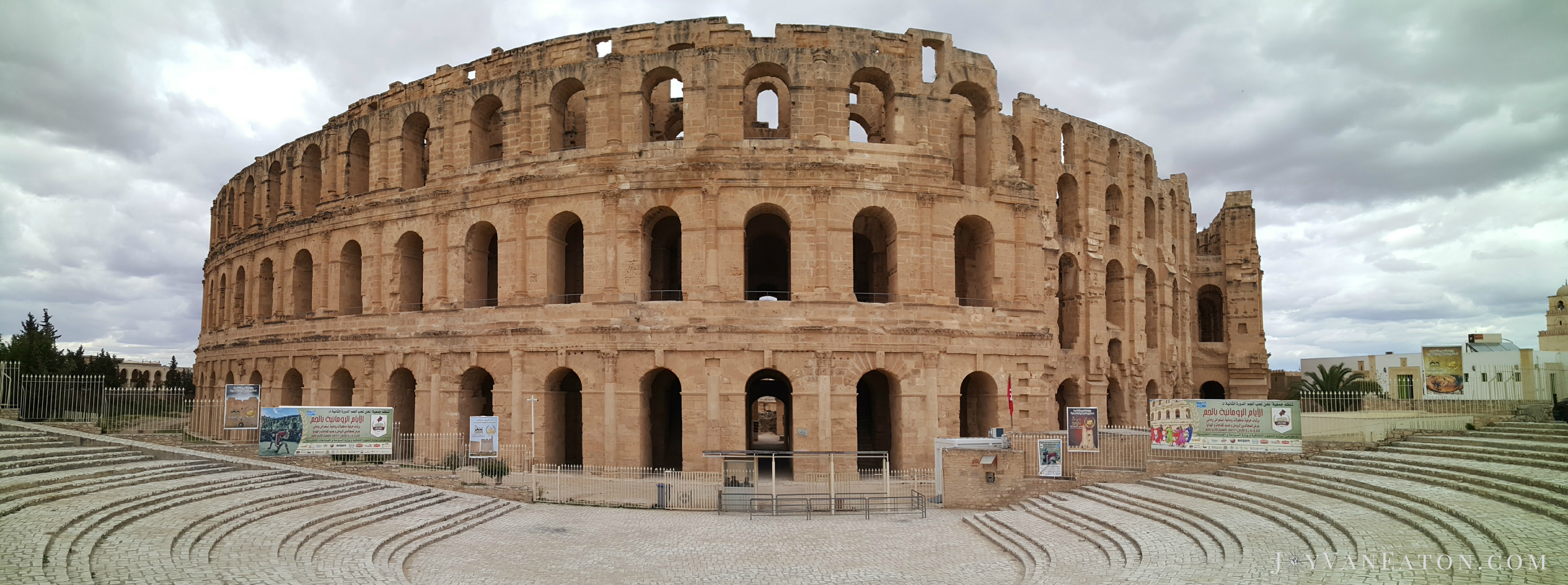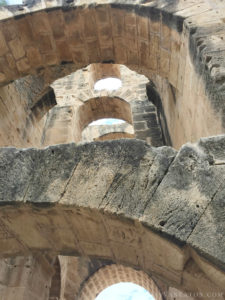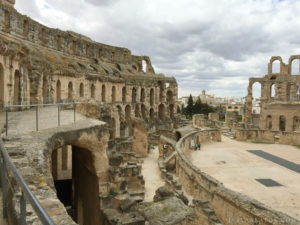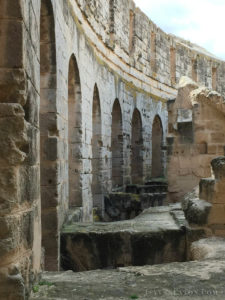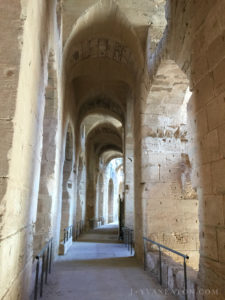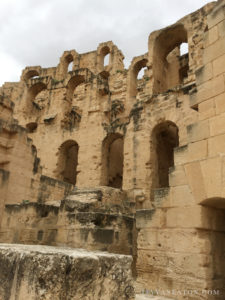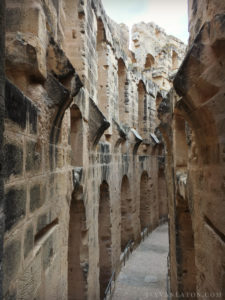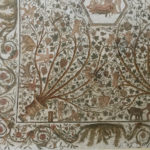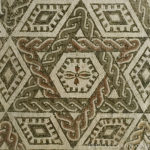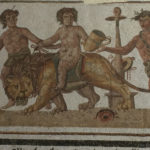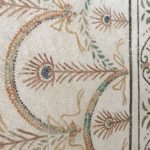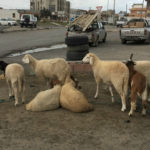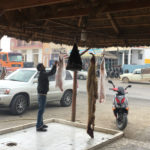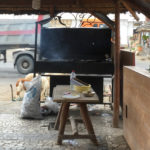Tunisia boasts some of the best-preserved Roman ruins in the world, and the amphitheater and museum in El Jem (ancient Thysdrus) appear toward the top of my recommended sites to visit. El Jem is approximately two and a half hours south of Tunis and accessible by the A1 highway. There are toll booths along the way, but the fees will only cost you about 9 dinars if you are coming from the capital. If you happen to be staying in Hammamet or Sousse at one of the beach resorts, the drive and tolls will be even less. (FYI – Be sure to carry some coins for the tolls.)
The Roman Amphitheater
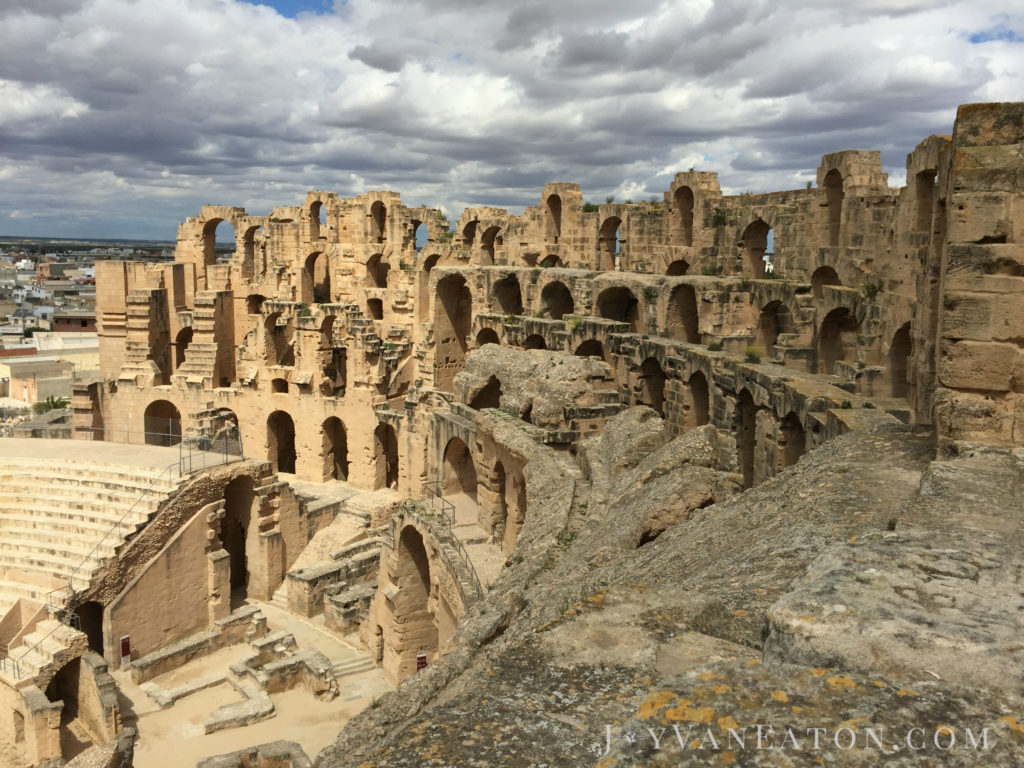
Purchasing a ticket at the entrance for 10 dinars allows you access to both the amphitheater and the museum across town. Once inside, the ascent to the top immediately begins. Trek up the stone stairway, leading you higher and higher into the edifice until you finally see the sky.
A birds-eye view of the site and the town awaits you at the top where you can imagine yourself as a spectator at one of the gladiator fights during the apex of Roman rule in North Africa. The structure is so impressive that scenes from The Gladiator were filmed here.
 Unlike the Colosseum in Rome, there are few tourists. You can leisurely wander along the top and then head down to the floor to get some perspective on its enormity. The Romans built the oval amphitheater in 238 A.D., and it seated over 35,000 people. During the summer, the town now hosts musical events in here.
Unlike the Colosseum in Rome, there are few tourists. You can leisurely wander along the top and then head down to the floor to get some perspective on its enormity. The Romans built the oval amphitheater in 238 A.D., and it seated over 35,000 people. During the summer, the town now hosts musical events in here.
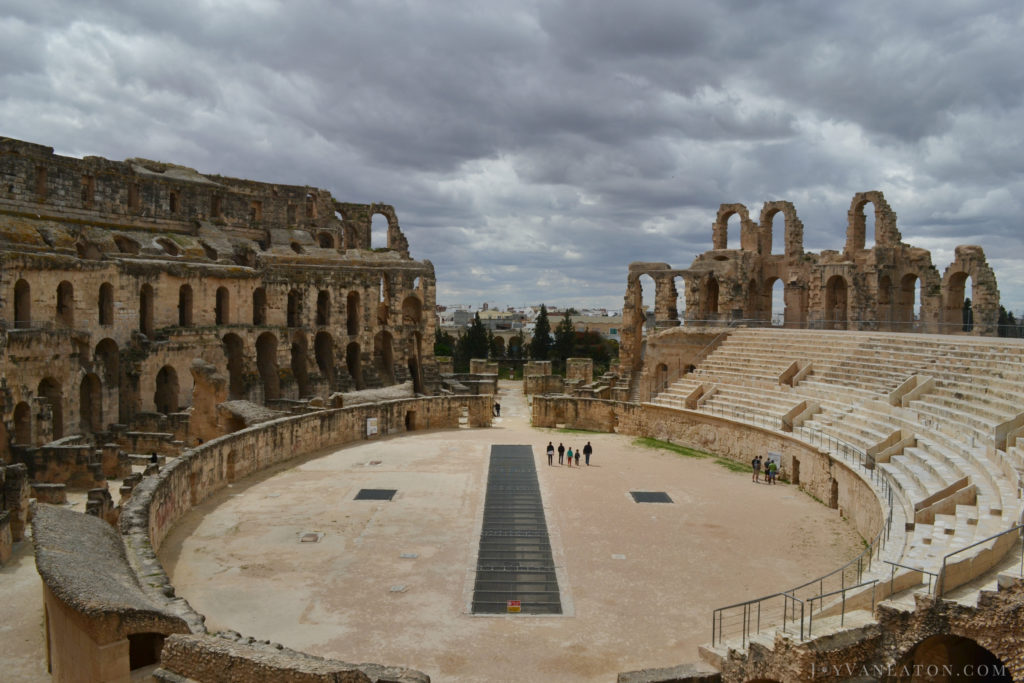
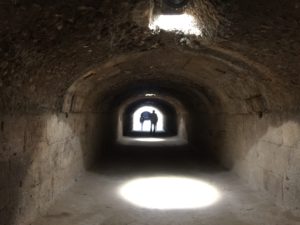
Passageways criss-cross along the edges and under the floor, allowing you to walk where animals waited in caged chariots to be released for a fight and gladiators traveled to the temple or an altar before meeting their fate.
The Museum in El Djem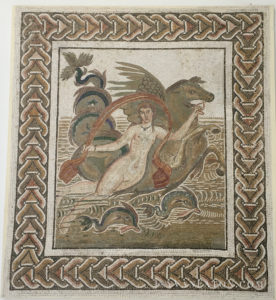
Be sure not to skip the museum in El Djem. The museum houses a collection of mosaics from public buildings and villas from the ancient Roman city of Thysdrus. The museum sits on the foundations and in the shape of a palatial Roman villa. Beautiful mosaic masterpieces cover the walls and floors of the museum, and dioramas show the original locations of the mosaics in several large homes. The colors and quality of many of the mosaics rival ones found in the Bardo Museum in Tunis, but the museum is a more manageable size for a casual visit.
Behind the museum is an area excavated in the 1990s. It features a large Roman home built around 170 A.D. and known as the “house of Africa.” The museum partially reconstructed it so visitors can see the architecture of ancient Roman villas. A traditional portico surrounds a lovely garden, and visitors can view many of the mosaics in their original locations in the house.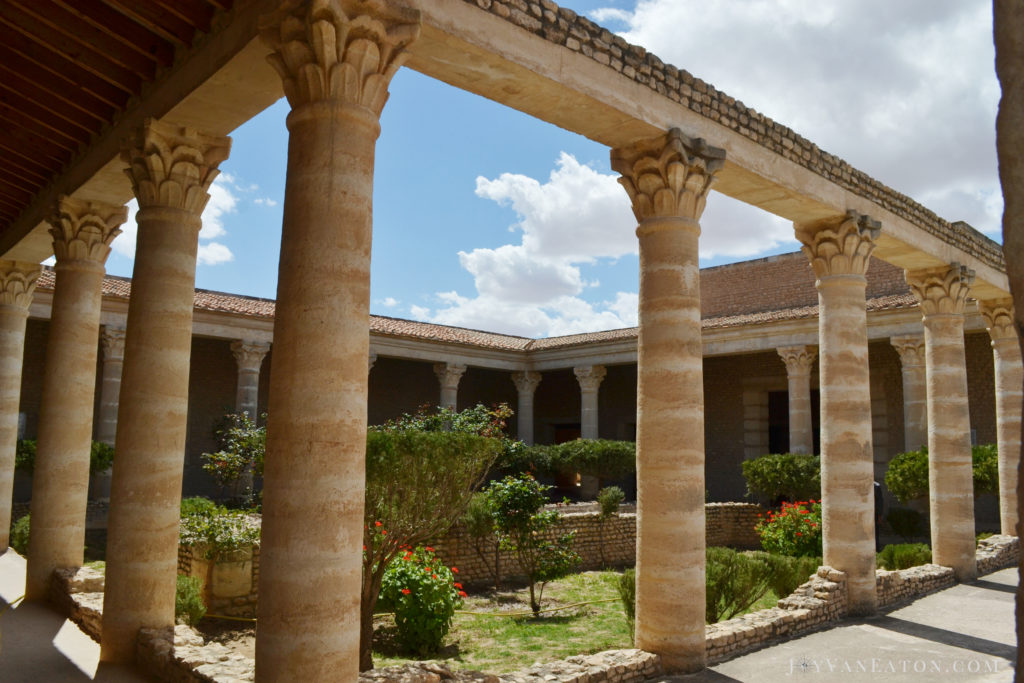
Where to Eat
If you like lamb or think you might like lamb, stop at one of the many lamb restaurants where the entire preparation process of an animal takes places within a few hours. Along the main roads leading to the the A1, stall after stall sells fresh grilled lamb. Small groups of sheep sit tied up outside the shops to meet the demand of the lunch crowd.
You order the meat by the kilogram, and then they grill it. French fries, unlimited baskets of bread, and the normal Tunisian accompaniments of olives, olive oil, and harissa for dipping arrive to complete your feast.
It really doesn’t get any fresher or better than this!
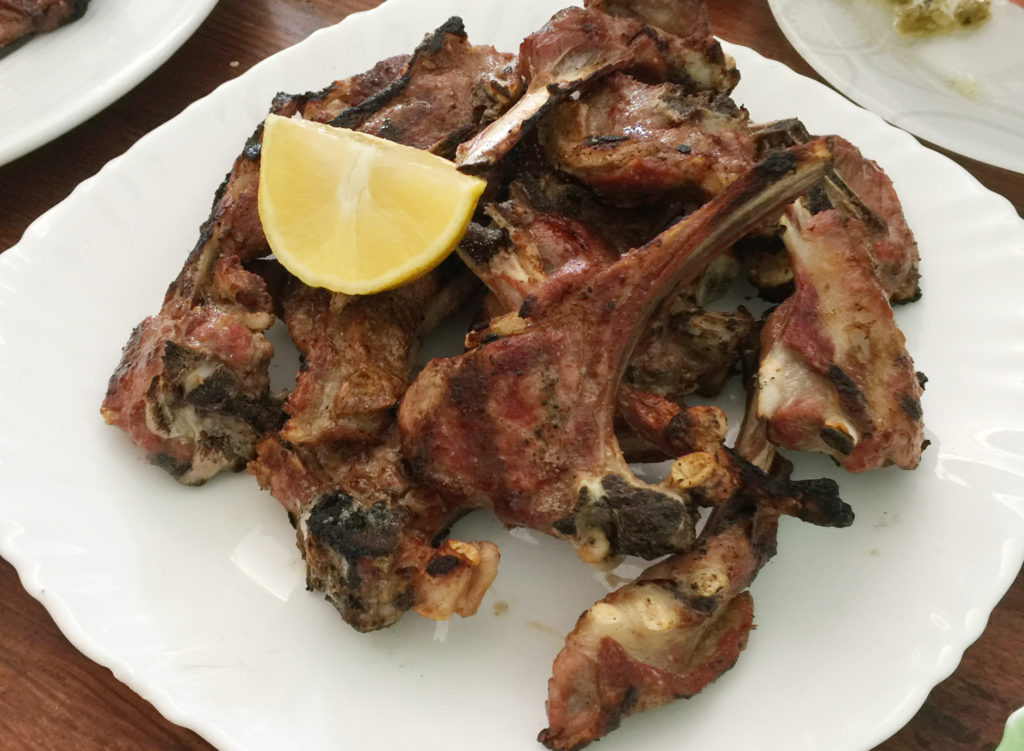
I have to admit, I was not a big fan of lamb before coming to Tunisia, but my restaurant experience here changed my mind — and it might change yours!
To Hire a Guide or Not
You could certainly visit El Djem and the Roman amphitheater on your own, but I decided to pay a guide from Tunis to accompany me since I was hosting guests from the U.S. My friend, *Nour, speaks English, French, Spanish, and Arabic and is a nationally certified guide. I found her to be very helpful in explaining the history of the city, the Roman houses at the museum, and the amphitheater itself. Historic sites’ brochures and museum artifact descriptions in Tunisia tend to be sparse and mostly in French. Nour also knows drivers with vehicles available to take you to El Djem for the day if you don’t have your own transportation or prefer to avoid driving in Tunisian traffic.
Lastly, having a guide really helps if you do not speak either Arabic or French. Ordering at restaurants and finding some of the highlights of a town off the tourist track are easier with a guide/translator. For example, the menu at the restaurant was only in Arabic. You might have been able to just order in French, but reading the menu would be impossible without Arabic. Nour also told us where to find the workshop of one of the best mosaic artisans in Tunisia (article coming soon), and helped us purchase traditional regional bread at a local shop.
Fortunately, the people outside of Tunis — and particularly to the south — tend to be very kind and friendly, so they will usually try to help you as much as they can. If you choose the route of hiring a guide, here is Nour’s information:
*Nour El Houda
Email: Narnoura_01@hotmail.com
Let's connect!

Sign up to get my newsletter with the latest posts
and inspirational ways to bring global travel home delivered to your inbox.
